Bharata Natyam, a classical Indian dance form, is steeped in rich heritage and profound meaning. This blog delves into its significance in Indian culture, exploring its origins, spiritual connotations, and the emotional depth it embodies as a medium for knowledge transmission.
Table of Contents
- The Fundamental Difference: Dance vs. Natyam
- The Purpose and Heritage of Natyam
- Core Values of Bharat and Their Reflection in Natyam
- Understanding the Statue of Natarajaswamy
- Philosophical Insights from Nataraja Swamy
- Symbolism of the Nataraja Statue
- Cultural Perspectives on Gender in Bharat
- The Significance of Creation and Destruction in Natyam
- Emotional Connection: Knowledge to Wisdom
- The Role of Sanghitam and Sahityam in Natyam
- Art as a Medium of Knowledge in Bharat
- Conclusion: The Legacy of Natyam
- FAQ: Common Questions about Bharata Natyam
The Fundamental Difference: Dance vs. Natyam
The distinction between dance and Natyam is profound and essential. Dance often serves as a form of entertainment, a pleasurable activity that brings joy and excitement. In contrast, Natyam transcends mere enjoyment; it embodies a purpose rooted in tradition, spirituality, and cultural expression. While dance is an art form, Natyam is an intricate weave of storytelling, philosophy, and emotional depth.
To appreciate the essence of Natyam, one must recognize its structured approach, which has developed over thousands of years. This complexity allows Natyam to convey profound messages and emotions, making it a vital component of Bharat’s cultural heritage.
The Purpose and Heritage of Natyam
Natyam is not just a performance; it is a medium for communicating knowledge, history, and values. It captures the essence of Bharat’s spiritual and cultural narratives, serving as a bridge between the past and present. The roots of Natyam lie deep within the traditions of Bharat, where it has been practiced and revered for centuries.
Each movement, gesture, and expression in Natyam tells a story, reflecting the rich tapestry of Indian mythology and philosophy. As a medium of instruction, it teaches moral values and cultural identity while fostering a sense of community among practitioners and audiences alike.
Core Values of Bharat and Their Reflection in Natyam
The core values of Bharat—unity, harmony, and respect for all forms of life—are intricately woven into the fabric of Natyam. These values are not merely theoretical but are demonstrated through the performances that celebrate the interconnectedness of life.
- Inclusivity: Natyam embraces diversity, representing various aspects of life and culture.
- Spirituality: The performances often invoke a sense of the divine, connecting the audience to higher truths.
- Emotional Resonance: The art form engages the audience on an emotional level, fostering empathy and understanding.
Understanding the Statue of Natarajaswamy
At the heart of understanding Natyam lies the statue of Natarajaswamy, which symbolizes the dance of creation, preservation, and destruction. This statue serves as a visual representation of the cosmic dance that governs the universe.
To truly grasp the significance of Natarajaswamy, one must visit the temple in Chidambaram, Tamil Nadu. This temple, unique in its design, emphasizes the concept of emptiness as a manifestation of divinity. Here, the absence of a physical idol invites devotees to visualize the essence of Lord Shiva in their minds.
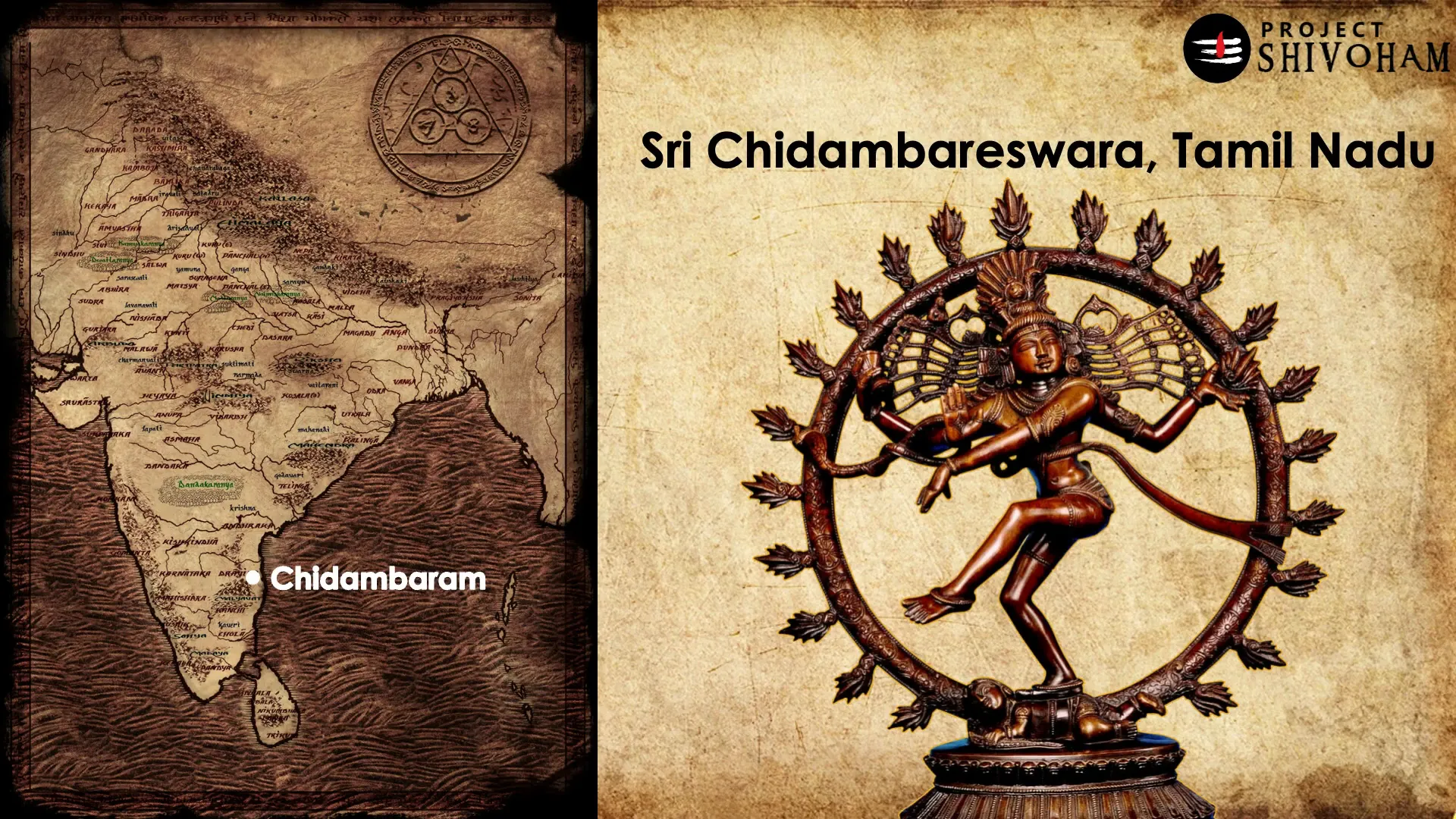
Philosophical Insights from Nataraja Swamy
Nataraja Swamy embodies profound philosophical insights that resonate with the teachings of Bharat. The dance performed by Nataraja symbolizes the eternal cycle of life, reflecting the dualities of creation and destruction, movement and stillness, joy and sorrow.
Each aspect of Nataraja’s form carries deep meaning, from the damaru in his hand, representing the source of creation, to the Agni that signifies destruction. This interplay of opposites is fundamental to understanding the nature of existence itself.
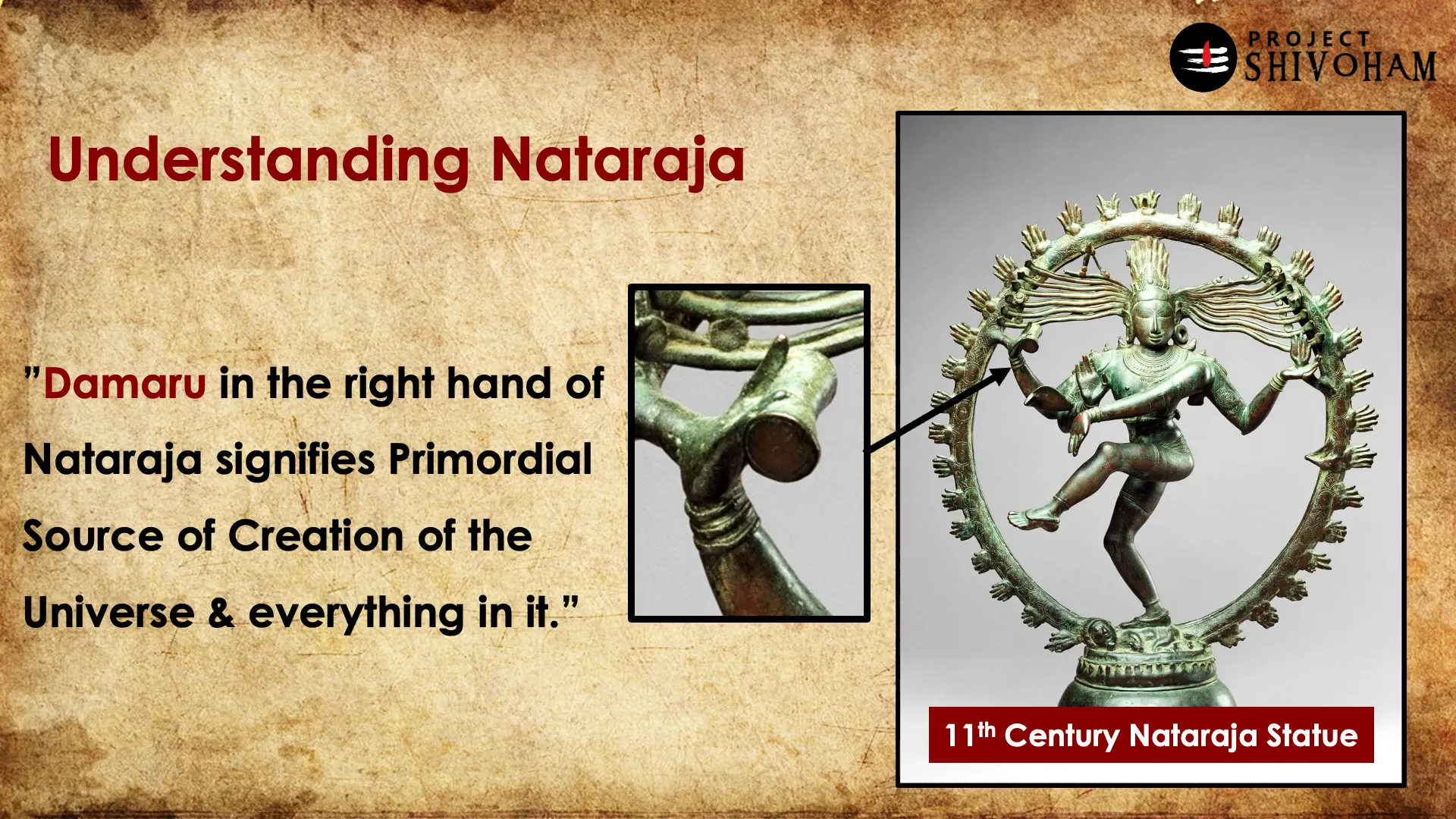
Symbolism of the Nataraja Statue
The Nataraja statue is rich with symbolism that extends beyond its aesthetic appeal. Each element is meticulously designed to convey deeper meanings:
- Damaru: Symbolizes the rhythm of creation and the fundamental sound of the universe.
- Agni: Represents the transformative power of destruction, clearing the way for new beginnings.
- Apasmaraka: The dwarf demon under Nataraja’s feet signifies ignorance, which must be overcome to attain enlightenment.
Understanding these symbols enhances the appreciation of Natyam, as they are often integrated into performances, enriching the narrative and the audience’s experience.
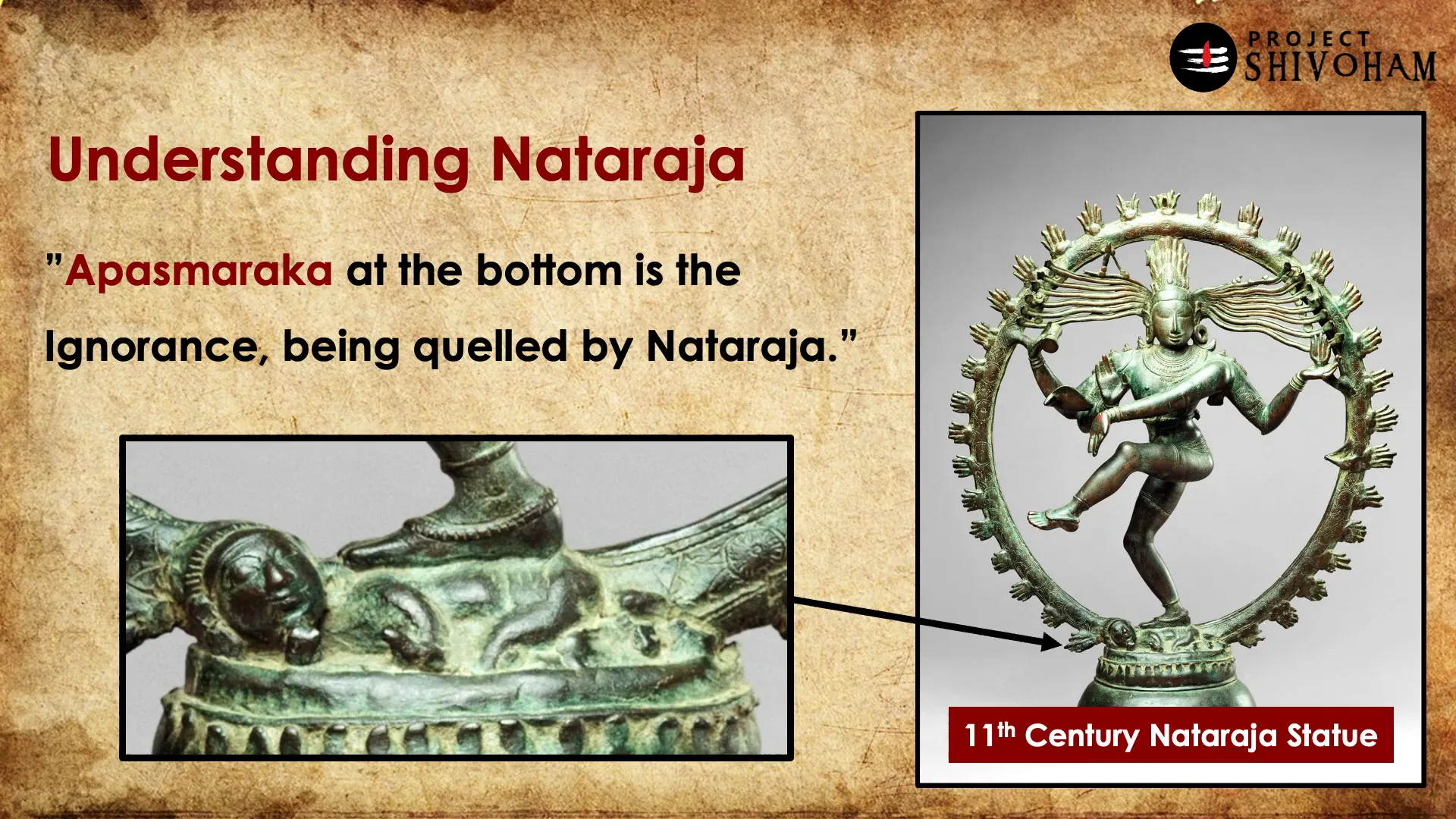
Cultural Perspectives on Gender in Bharat
Gender roles in Bharat are complex and multifaceted, often misrepresented in contemporary discussions. Natyam reflects the cultural reverence for femininity, placing women at the center of its performances. The duality of masculine and feminine energies is celebrated, particularly in the representation of Nataraja, who embodies both aspects.
Despite modern challenges, the cultural ethos of Bharat emphasizes respect and honor for women. The teachings embedded in Natyam advocate for equality and appreciation of both genders, offering a counter-narrative to the prevailing stereotypes.
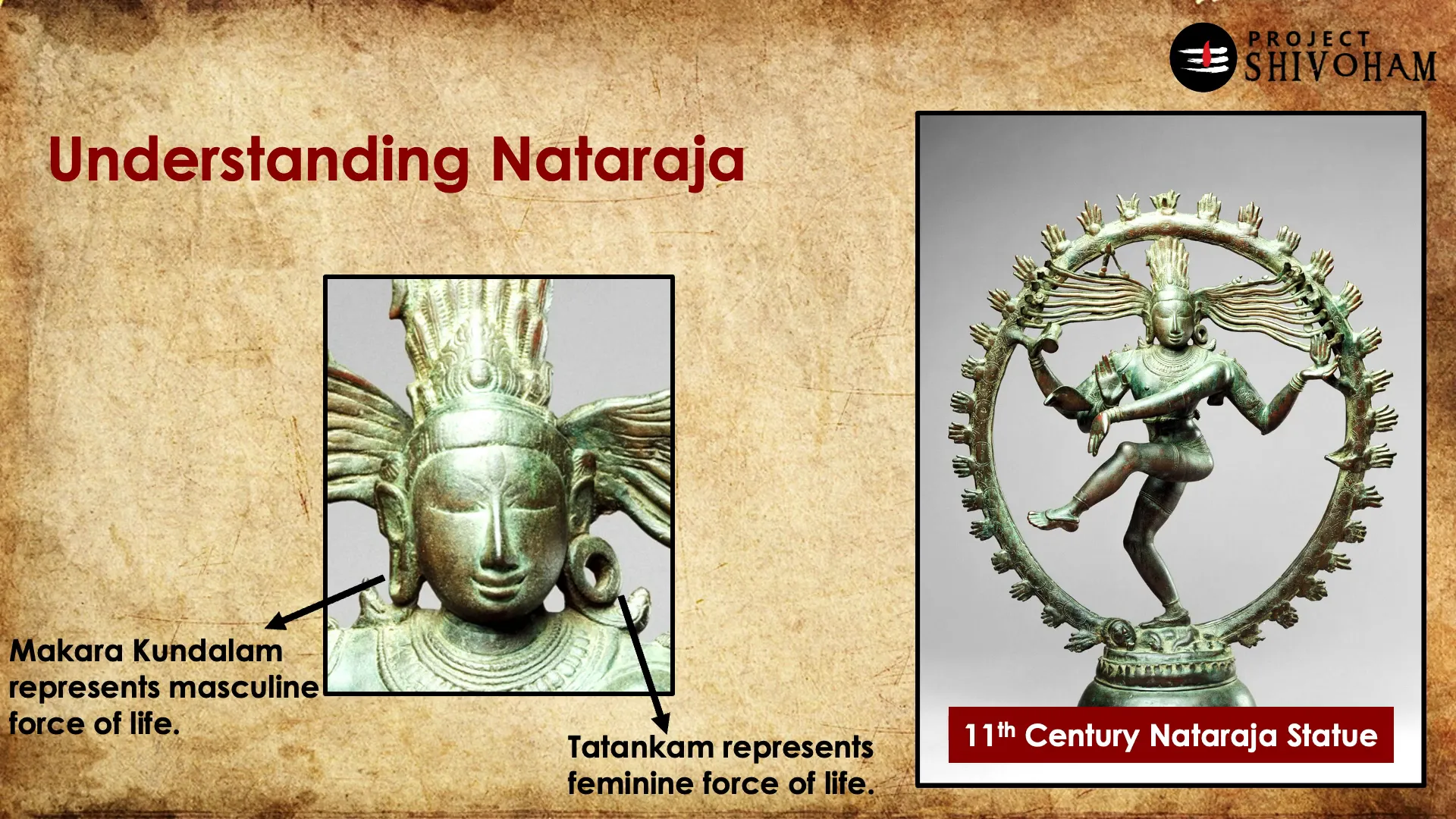
The Significance of Creation and Destruction in Natyam
Natyam encapsulates the fundamental duality of creation and destruction, mirroring the cosmic cycle of life. This dance form embodies the essence of Nataraja, where each movement symbolizes the rhythm of the universe, illustrating how creation is intertwined with destruction. The right hand, holding the damaru, signifies the initiation of life, while the left, bearing Agni, represents the necessary dissolution that paves the way for renewal.
Understanding this interplay is crucial for grasping the depth of Natyam. It teaches that destruction is not merely an end, but a vital part of the life cycle, fostering growth and transformation. This philosophy resonates deeply within Bharat’s cultural fabric, emphasizing the importance of balance and harmony.
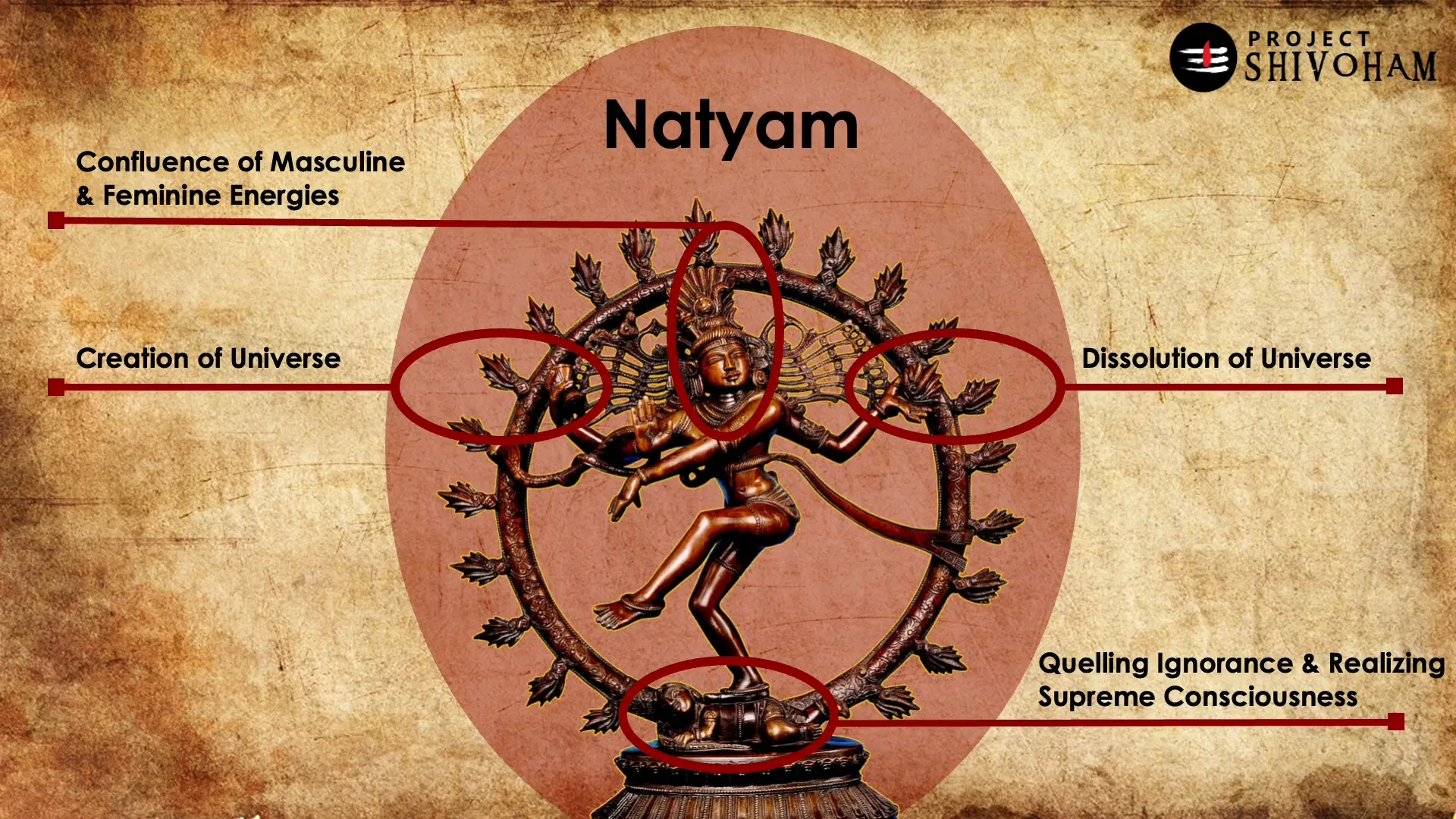
Emotional Connection: Knowledge to Wisdom
The journey from knowledge to wisdom is profoundly influenced by our emotional connections. In Natyam, this transformation is facilitated through the Navarasas, or nine emotions, which serve as a bridge between intellectual understanding and experiential learning. Each rasa evokes specific feelings that resonate with the audience, making the knowledge conveyed through Natyam more impactful.
For instance, the emotion of love can enhance the remembrance of a lesson, while fear can deter us from harmful actions. This emotional engagement is crucial in the educational practices of Bharat, where the arts are not merely for entertainment but serve as powerful mediums for imparting wisdom. By harnessing these emotions, Natyam transforms knowledge into a lived experience.
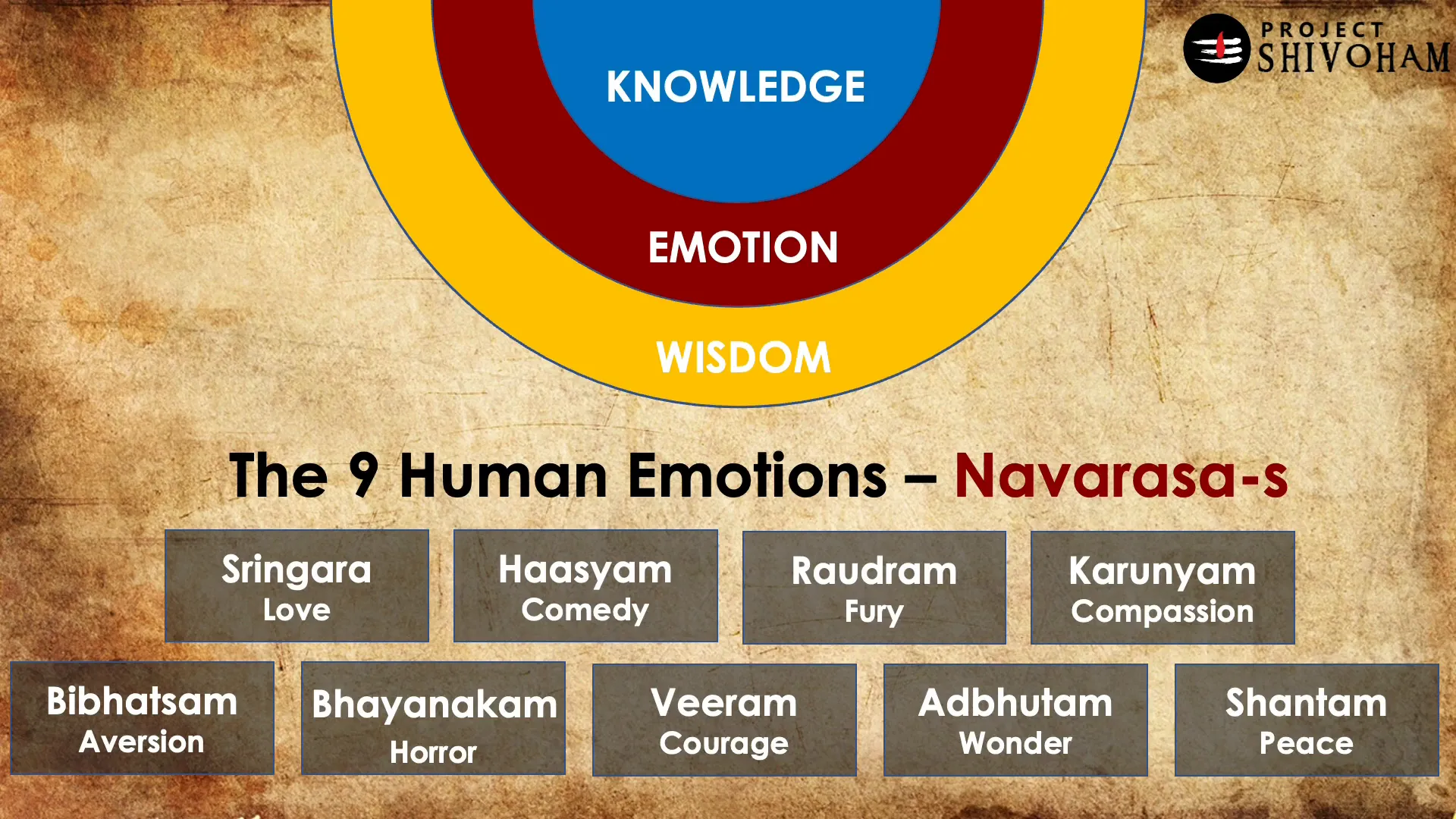
The Role of Sanghitam and Sahityam in Natyam
Sanghitam, the musical component, and Sahityam, the literary aspect, are integral to Natyam. Together, they provide a comprehensive framework for conveying complex ideas and emotions. Sanghitam enriches the performance, setting the tone and mood, while Sahityam articulates the story and philosophical underpinnings.
This synergy creates a multi-dimensional experience for the audience, allowing them to engage with the performance on various levels. The combination of rhythm, melody, and narrative fosters a deeper understanding of the themes presented, making Natyam a holistic educational tool.
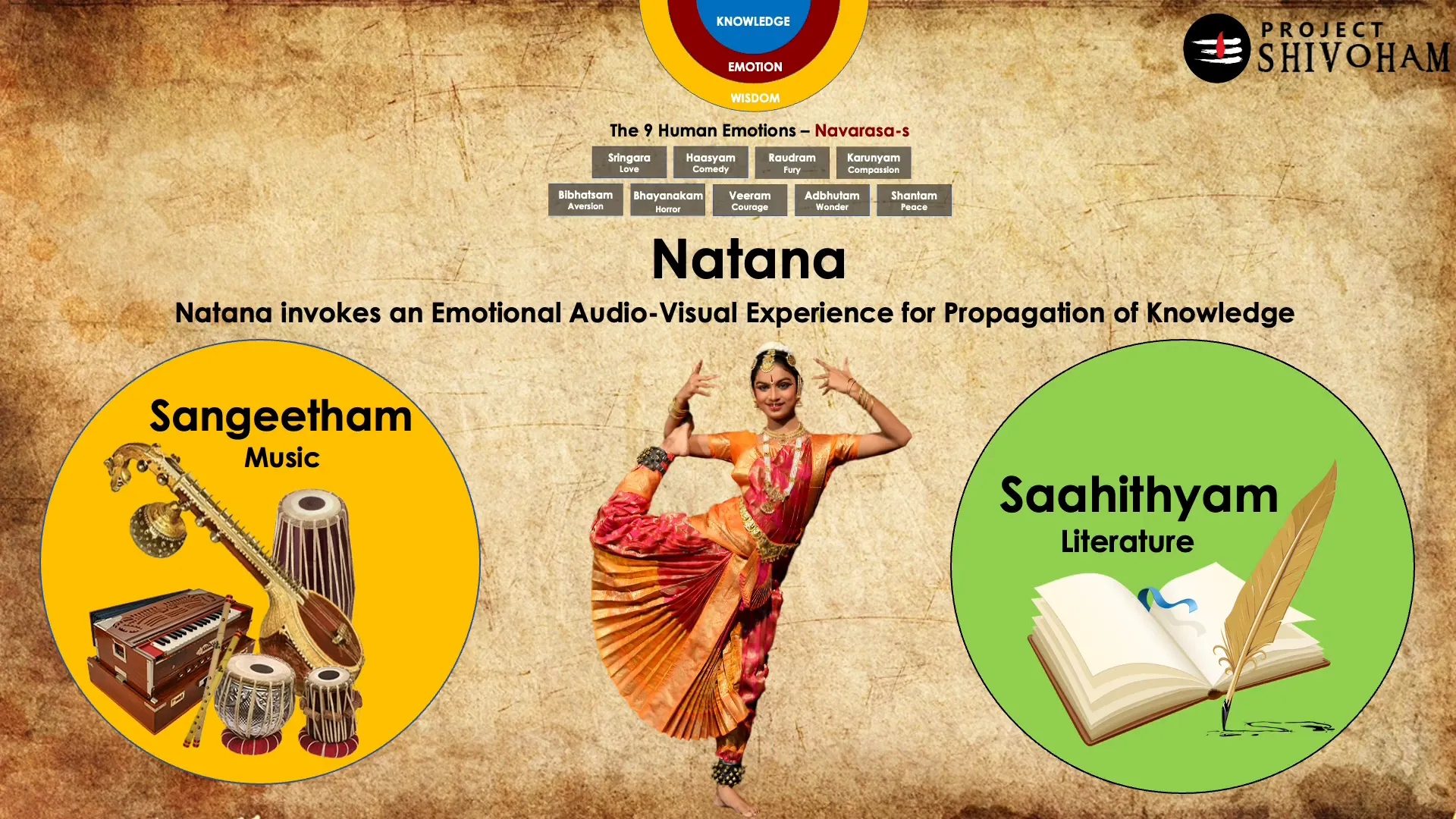
Art as a Medium of Knowledge in Bharat
In Bharat, art is perceived as a vital medium for knowledge transmission, distinct from the purely entertainment-focused view often held in the West. Natyam exemplifies this principle, where each performance serves to educate and enlighten. The integration of Sanghitam and Sahityam within Natyam ensures that the knowledge conveyed is not only retained but also understood on a deeper emotional level.
This approach allows for diverse topics—ranging from ancient epics to contemporary social issues—to be explored through the medium of dance. The ability to convey complex ideas artistically ensures that the lessons learned through Natyam resonate with audiences, fostering a culture of learning and reflection.
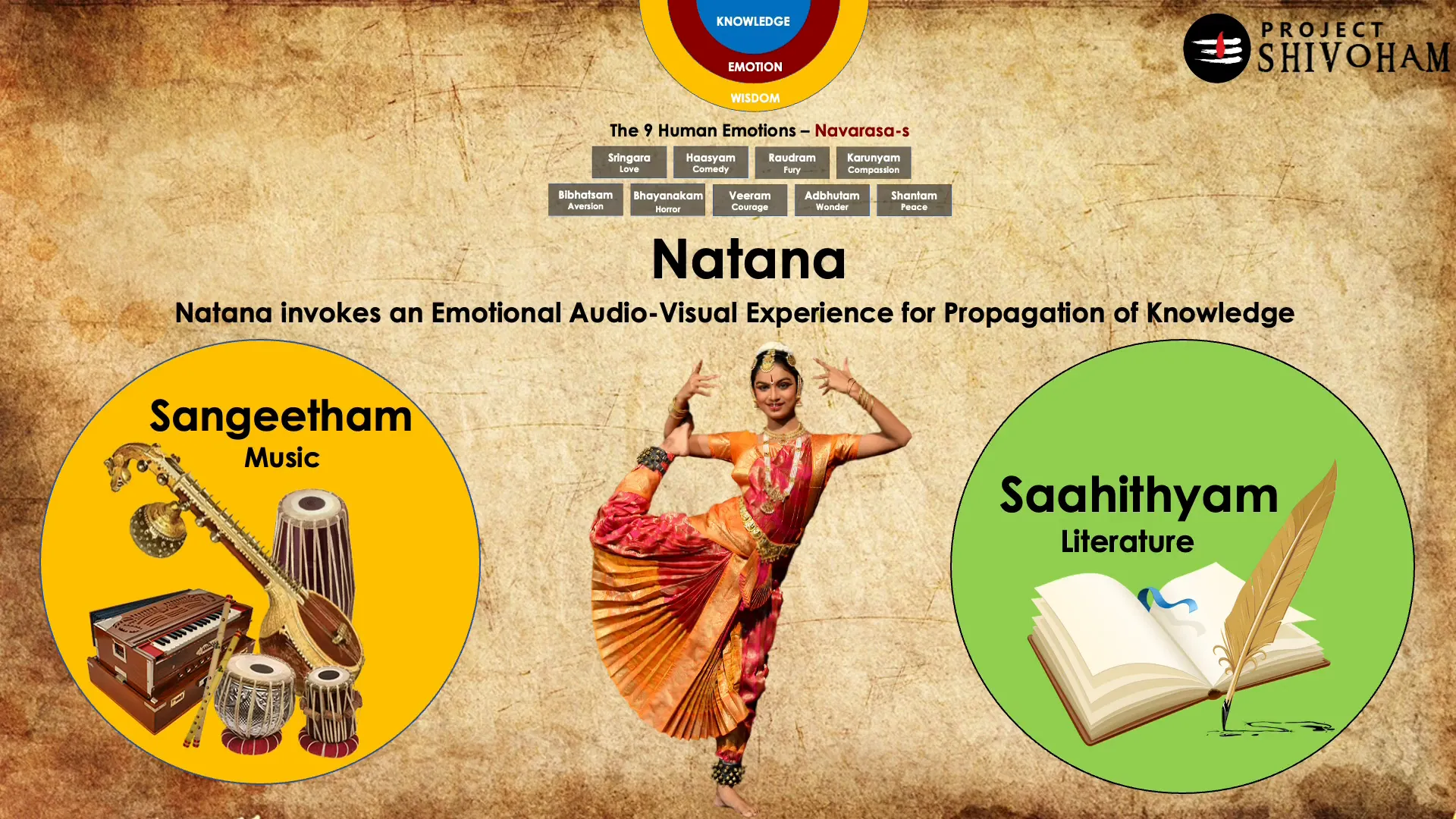
Conclusion: The Legacy of Natyam
Natyam stands as a testament to Bharat’s rich cultural heritage, encapsulating the essence of creation, preservation, and destruction. It is not merely a dance form but a profound medium for knowledge transmission, deeply rooted in the philosophical teachings of Bharat. The emotional connections fostered through Natyam enhance the learning experience, ensuring that the wisdom imparted is both impactful and enduring.
As we appreciate Natyam, we recognize its role in preserving and propagating the values and knowledge of Bharat, making it an indispensable part of our cultural identity. The legacy of Natyam continues to inspire and educate, reminding us of the interconnectedness of all life and the importance of balance within the universe.
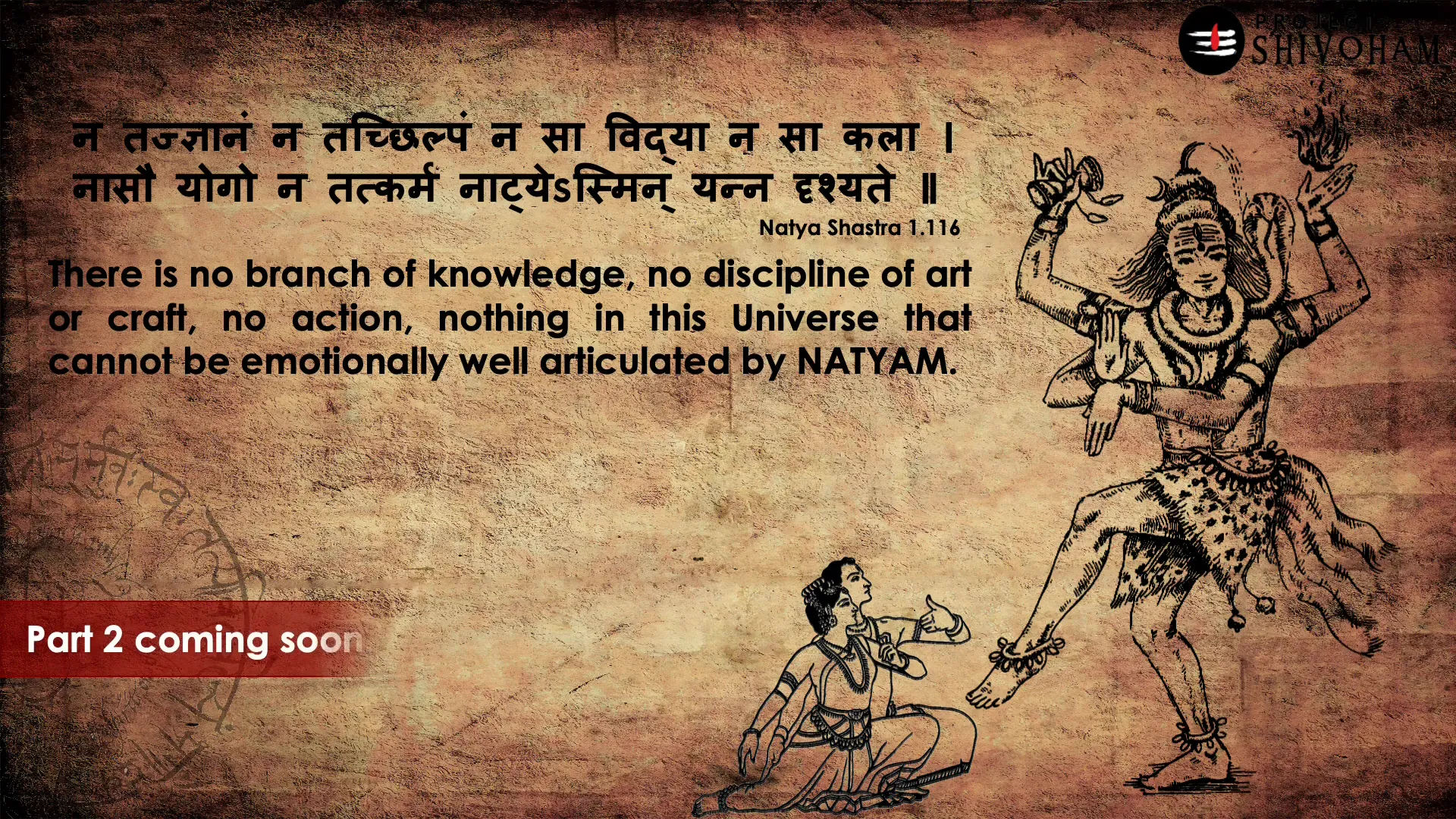
FAQ: Common Questions about Bharata Natyam
What is Bharata Natyam?
Bharata Natyam is a classical Indian dance form originating from Tamil Nadu. It combines expressive hand gestures, facial expressions, and intricate footwork to convey stories and emotions.
How does Bharata Natyam differ from other dance forms?
Unlike many contemporary dance forms, Bharata Natyam is deeply rooted in spirituality and storytelling, emphasizing the transmission of cultural values and philosophies.
What is the significance of the Navarasas in Bharata Natyam?
The Navarasas, or nine emotions, are essential for conveying complex emotions and narratives in Bharata Natyam. They provide a framework for the dancer to express a wide range of feelings, enhancing the audience’s experience.
Can anyone learn Bharata Natyam?
Yes, Bharata Natyam can be learned by anyone interested in the dance form. It requires dedication, practice, and a willingness to engage with its cultural and spiritual dimensions.
What role does music play in Bharata Natyam?
Music, or Sanghitam, is a vital component of Bharata Natyam. It sets the rhythm and mood, enriching the performance and enhancing the emotional connection with the audience.